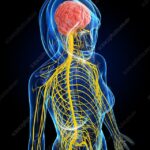The phrase “Sage on the Stage, Guide on the Side” has become a cornerstone in discussions about education reform, sparking debates about the effectiveness of traditional versus constructivist teaching methods. While some passionately advocate for one approach over the other, particularly favoring the “Guide on the Side” model, a more nuanced understanding reveals that both methodologies play crucial roles in effective instruction.
The Sage on the Stage: Direct Instruction and its Importance
Direct instruction, often associated with the “Sage on the Stage” approach, remains a powerful tool, especially when introducing new concepts or building foundational skills. Research consistently demonstrates its efficacy in situations where students possess limited prior knowledge or need to develop automaticity in specific skills. Math and reading fundamentals serve as prime examples where direct instruction proves invaluable. In higher education, lectures, a common form of direct instruction, offer an efficient way to convey information across various disciplines. The key is that lectures, when well-delivered, still have a place in education.
I still remember the lectures from my undergrad music history professor. He was a gifted storyteller, and his lectures alone were enough to help me learn.
The Guide on the Side: Constructivism and Higher-Order Thinking
While less research directly supports the broad effectiveness of purely constructivist approaches, it excels in fostering problem-solving and critical thinking skills. Constructivist teaching aligns well with content requiring these abilities. However, it’s crucial to recognize that effective teaching often involves a transition from direct instruction to a constructivist approach. Teachers typically initiate the learning process with more direct guidance, gradually empowering students to take ownership of their learning journey.
Information Literacy: A Case Study
Consider information literacy instruction. Before delving into higher-order thinking, students need automatic skills: mastering search syntax, navigating databases, and understanding information evaluation criteria (e.g., the CRAAP test). Direct instruction, often through tutorials, efficiently imparts these foundational skills.
Once students possess these skills, constructivist approaches, such as inquiry-based or problem-based learning, become essential. Developing schemata about the research and writing process—allowing them to apply past experiences to new problems—is key to information literacy. Inquiry-based learning fosters schemata development, highlighting the effectiveness of constructivist methods.
The Hybrid Approach: Integrating Both Methodologies
The difficulty in teaching information literacy arises from the need for both direct instruction and constructivist approaches. True mastery requires ample opportunity for constructivist learning. Potential solutions include flipped instruction or fully integrated approaches aligned with situated learning, a highly constructivist methodology.
The debate over “Guide on the Side” vs. “Sage on the Stage” is ultimately unproductive. Both approaches are essential for successful learning. The most effective educators recognize this and skillfully integrate both methodologies into their teaching practices.
Embracing “Both”: A Balanced Perspective
Therefore, the next time someone asks, “Are you a Sage on the Stage or a Guide on the Side?”, confidently answer, “Both!” Recognizing the value of both approaches allows for a more holistic and effective approach to education. Teaching is a multifaceted profession and requires flexibility. The most important skill of all is knowing when each of these skills are necessary.
